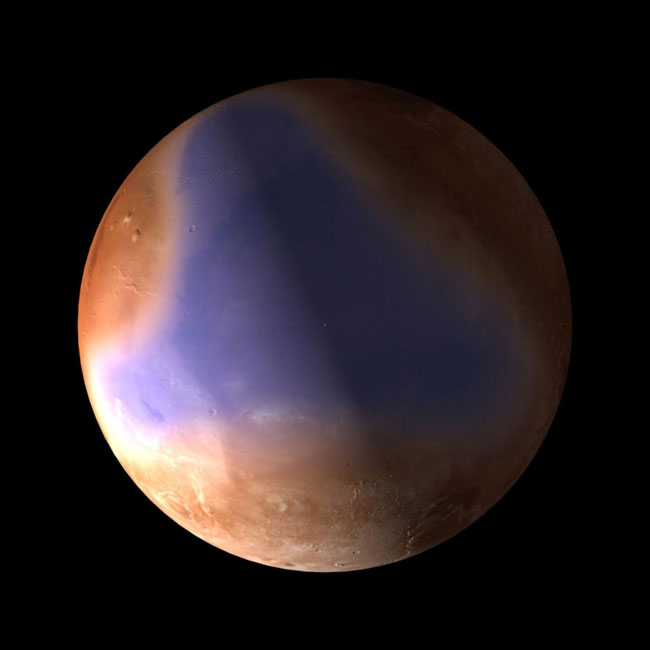Mars used to have an ocean
The European Space Agency's (ESA) Mars Discovery program has just proven to have had an ocean that covered part of Mars. The program to use the radar and seabed sediment detection in the boundary area was previously defined as the ancient coast of Mars.
>>>7 biggest mysteries about Mars have not been discovered
The new radar system explores the subsurface layer and the Martian atmosphere atmosphere (MARSIS) deployed in 2005 and collected information from then until now. Jérémie Mouginot from the Institute of Planetary and Planetary Sciences Grenoble (IPAG) and Irvine from the University of California and their colleagues analyzed data collected during the two years and found the southern plains covered with dilute material.
"We understand it's sediment, there may be a lot of ice," Mouginot said. "It's a new and strong sign that there used to be an ocean there."

The question of the existence of the oceans on ancient Mars has been given, features suggesting that the beach image is also recorded in many photographs by the spacecraft. But that is still a controversial issue.
The hypothesis existed in two oceans: Four billion years ago, when warm conditions were widespread, and three billion years ago the ice under melted surfaces impacted, creating currents that pulled the water out. low-lying areas.
'Radar program penetrates the depth of 60-80m of the planet's surface,' says Wlodek Kofman from the Grenoble Institute. 'From the surface to this depth, we see signs of sediment and ice.'
The MARSIS Program found sediments are located in low feedback radar areas. Sediment of this type is usually small and smooth, diluted by water and they bring to the current location.
However, the ocean in the later period did not last long. Mouginot estimates less than a million years, water either freezes in place and stays under the surface, or evaporates and dissolves into the atmosphere.'I think the ocean has not existed long enough to form life.'
To find signs of life, cosmic biologists will have to return to an earlier period of Mars history, when liquid water exists for longer periods.
However, the Program has provided the most authentic evidence so far, that there has been a large amount of liquid liquid on Mars, and is a testament to the role of water in Mars geographic history. .
'The first result of the program found water on the surface of Mars by studying images and mineralogical data as well as measuring the atmosphere. Now we have a look at the radar frequency of the surface , " Olivier said from the ESA Center. " That helps pair information about this mystery, but the question is still there: the water has disappeared. Where ? "
The MARSIS program is still ongoing.
- Did the ocean on Mars get into the rock?
- Mars used to have a huge ocean
- 'Mars used to have many oceans'
- Found new evidence of ancient oceans on Mars
- Reveal the mysterious black hole on the Martian crater
- Discover giant fish that live on Mars
- What if water on Earth is depleted to pour into Mars?
- 'The black hole in the sky' drains the Earth's neighbor's ocean?
- NASA explains the confusing
- Top 10 photos of Mars
- The 7 biggest mysteries about Mars have not been discovered
- Life may have existed 700 million years on Mars
 Van Allen's belt and evidence that the Apollo 11 mission to the Moon was myth
Van Allen's belt and evidence that the Apollo 11 mission to the Moon was myth The levels of civilization in the universe (Kardashev scale)
The levels of civilization in the universe (Kardashev scale) Today Mars, the sun and the Earth are aligned
Today Mars, the sun and the Earth are aligned The Amazon owner announced a secret plan to build a space base for thousands of people
The Amazon owner announced a secret plan to build a space base for thousands of people Was there nuclear war in ancient times?
Was there nuclear war in ancient times?  What happens to dead bodies on Mars?
What happens to dead bodies on Mars?  Watch NASA probe 'capture' Martian sandstorm
Watch NASA probe 'capture' Martian sandstorm  First photo of Mars' strangely shaped moon
First photo of Mars' strangely shaped moon  What makes Mars different from Earth
What makes Mars different from Earth  How will humans build on Mars?
How will humans build on Mars? 